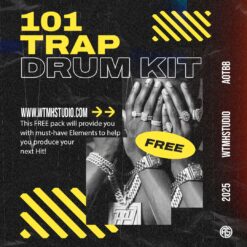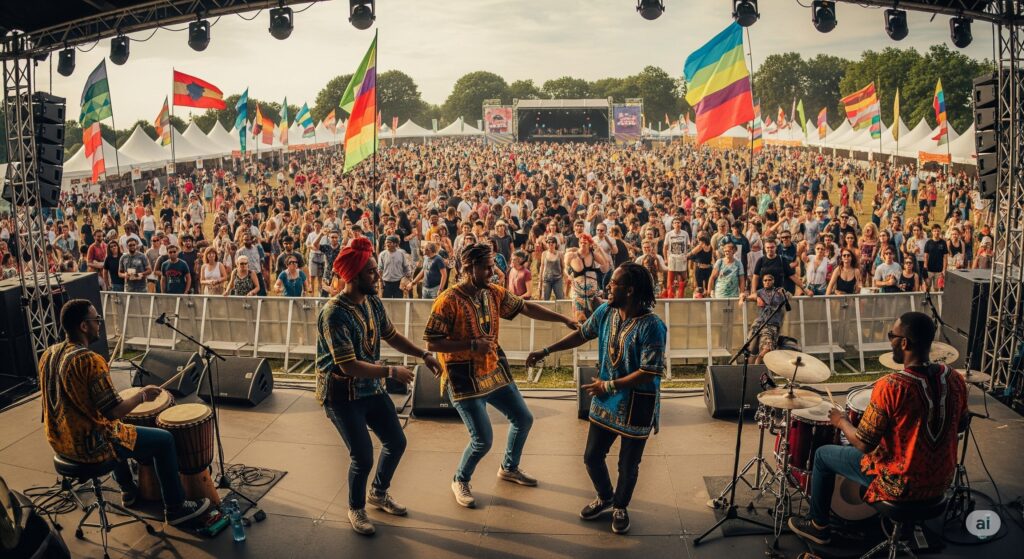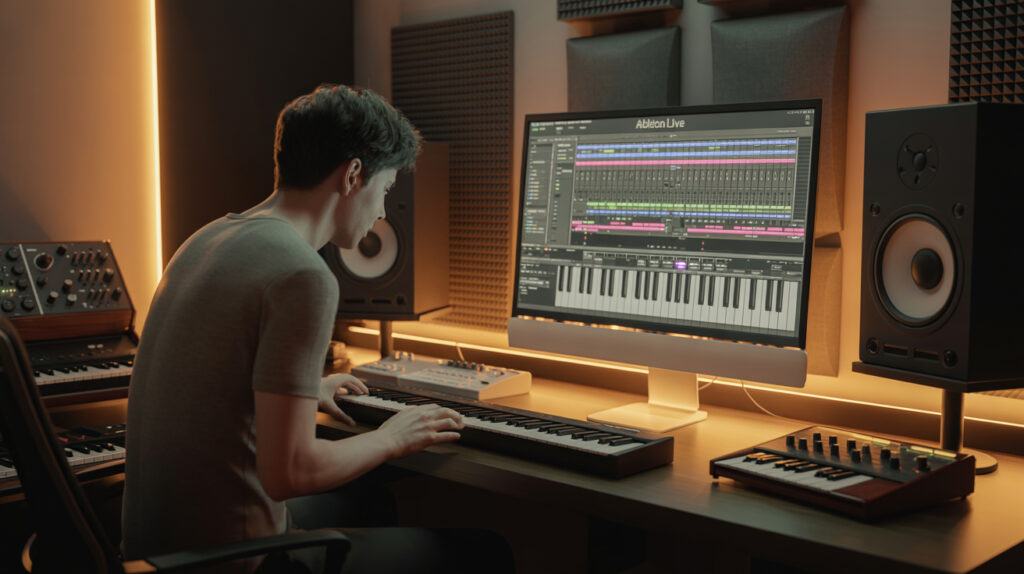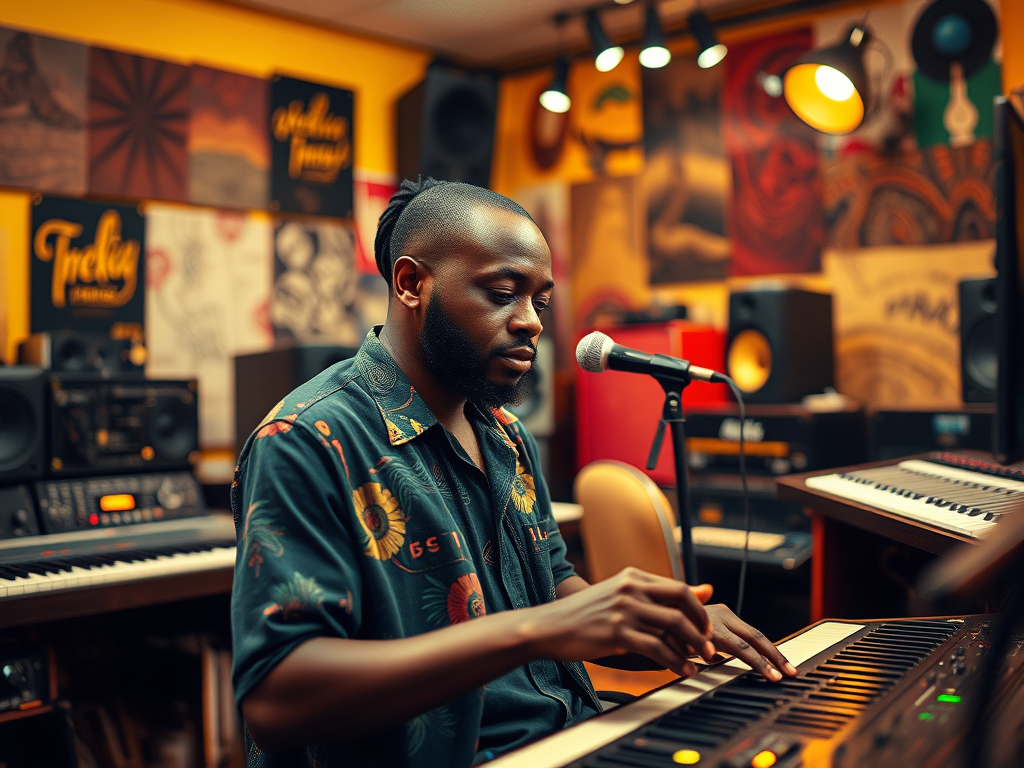-
×
101 TRAP - Drum Kit
 1 × $0.00
1 × $0.00
Afrobeat instrumental , Afrobeat type beat is more than just music, it’s a cultural movement. Born in Nigeria, this genre blends African rhythms, percussion, and melodies with modern hip-hop, R&B, dancehall, and electronic sounds. Today, Afrobeat type beats dominate streaming platforms, inspire dance challenges on TikTok, and fuel global collaborations between African and international artists.
If you’re a producer or beatmaker who wants to learn how to make Afrobeat type beats step-by-step, this guide will walk you through everything, from the origins of Afrobeats to the technical production steps, tips, and tools you need to craft professional-quality Afrobeat instrumentals.

Introduction to Afrobeats
The rhythmic pulse of Africa has always inspired the world. Afrobeats—a sound built on groove, rhythm, and soulful melodies—emerged as one of the most influential genres of the 21st century.
Origins of Afrobeats
In the 1970s, Fela Kuti, known as the father of Afrobeat, pioneered a revolutionary sound by blending traditional African percussion with jazz, funk, and messages of social change.
Evolution of Afrobeats
By the early 2000s, Nigerian artists like D’banj, Wizkid, and Burna Boy transformed the sound by fusing Afrobeats with hip-hop, reggae, and electronic music. Today, Afrobeat-inspired beats continue to shape the global pop culture landscape.
Global Impact
Afrobeats isn’t just African—it’s global. From Drake’s collaborations with Wizkid to Afrobeats dominating festivals in Europe and America, this genre has made waves on streaming platforms, social media, and international charts.
Technical Aspects of Afrobeat Beat Making
Afrobeats stand out because of their complex rhythm, layered percussion, and dynamic sound design.
- Polyrhythms & Syncopation – Layering multiple drum patterns to create a rich groove.
- Melodic Arrangements – Blending African-inspired melodies with modern synths, guitars, and vocal chops.
- Production Dynamics – Using automation, reverb, and panning to create depth and movement.
Understanding these basics is key before learning how to make an Afrobeat type beat.

How to Make Afrobeat Type Beats: Step-by-Step
Step 1: Preparation
Decide what vibe you want to create—uplifting, dance-ready, or emotional. This will guide your choice of drums, melodies, and instrumentation.
Step 2: DAW Setup
Open your Afrobeat DAW (FL Studio, Logic Pro, Ableton Live). Set the tempo between 95–115 BPM—the sweet spot for most Afrobeat productions.
Step 3: Instrument Selection
Use instruments that define the Afrobeats sound:
- Percussion: congas, bongos, shakers, talking drums
- Melodic: guitars, marimbas, synths, keyboards
- Bass: warm, punchy, and groovy
Step 4: Build the Rhythm
Start with kicks, snares, and percussion loops. Layer polyrhythms and use syncopation to create swing and groove.
Step 5: Add Melodies & Chords
Use catchy, repetitive melodic phrases. Experiment with guitars, pianos, and vocal chops to create memorable hooks.
Step 6: Arrange & Polish
Structure your beat with intros, build-ups, breakdowns, and drops. Use automation, filters, and effects to keep energy flowing.
Pro Tip: For inspiration, try an Afrobeat Sample Pack to access authentic drums, loops, and MIDI files.
Tips for Making Great Afrobeat Type Beats
- Vary the melody’s octave to keep it fresh.
- Create strong intros and breakdowns for dynamic energy.
- Add subtle percussion changes throughout to avoid repetition.
- Use automation (filters, volume, reverb) for professional dynamics.
- Reference tracks from Wizkid, Burna Boy, or Rema to guide your mix.

What Are Type Beats & Why They Matter
Type beats are instrumentals created in the style of a specific artist, producer, or genre, often labeled as “Wizkid type beat” or “Afrobeat type beat.” They help artists quickly find beats that match their sound without needing to explain every detail to a producer. For producers, type beats matter because they make music easier to discover on platforms like YouTube, BeatStars, and SoundCloud, where keywords drive visibility.
By making type beats, producers can showcase their style, attract artists searching for a particular vibe, and even boost their chances of sales or collaborations. In today’s music industry, type beats have become a bridge between independent producers and rising artists, shaping how modern music is created and shared.
For example, a “Wizkid type beat” or “Burna Boy type beat” helps new artists find the exact vibe they’re looking for.
For producers, creating Afrobeat type beats helps:
- Appear in search results for popular artists
- Showcase your production skills
- Attract artists and collaborations
- Increase beat sales on platforms like BeatStars, Airbit, or your own website

Where to Find Afrobeat Type Beats
- YouTube – Search for “Afrobeat Type Beat”
- Beat Marketplaces – Like Beatstars, Soundcloud & More..
- Individual Producers – Many producers sell exclusive beats and Afrobeat sample packs on their websites.
- Free Tools – BandLab, Soundtrap, or Garageband for beginners.
Chek out our YouTube Channel For Some Afrobeat type beats: https://www.youtube.com/@AOTBB_
How to Make Type Beats (Step-by-Step)
- Choose an Artist Style – Wizkid, Burna Boy, Rema, Davido, etc.
- Study Rhythm & Tempo – Match BPM and groove to the artist’s signature sound.
- Use Signature Sounds – Afrobeat drums, 808s, synths, and guitar riffs.
- Incorporate Samples – Add authentic vocal chops or percussive loops.
- Add Your Twist – Don’t just copy—bring your unique touch to stand out.
Conclusion
Afrobeat type beats beautifully combine tradition with modern innovation. Rooted in the legacy of pioneers like Fela Kuti and carried forward by today’s global Afrobeats movement, this genre continues to inspire producers and beatmakers around the world. From the rhythmic drum patterns to the soulful guitar riffs, every element of Afrobeat production reflects both culture and creativity.
By following these step-by-step techniques, experimenting with authentic African sounds, and applying consistency in your workflow, you’ll not only master Afrobeat beat making but also create Afrobeat instrumentals that resonate with listeners worldwide.
Whether you’re producing Afrobeat type beats for artists, building your catalog, or simply sharpening your music production skills, embracing the Afrobeat groove will set you apart in the competitive world of modern beat making.
FAQ – Afrobeat Type Beats
Q1: What BPM should I use for Afrobeat type beats?
A: Most Afrobeat beats range between 95–115 BPM.
Q2: Do I need African instruments to make Afrobeat beats?
A: Not always. You can use sample packs, VSTs, and guitars to capture the vibe.
Q3: Can I make Afrobeat beats with stock DAW plugins?
A: Yes—stock sounds work fine, but Afrobeat sample packs add authenticity.
Q4: What makes Afrobeat beats unique?
A: Polyrhythms, syncopation, and the blend of African percussion with modern melodies.
Q5: Where can I sell Afrobeat beats online?
A: Your own website, YouTube, BeatStars, Airbit, and social media platforms.